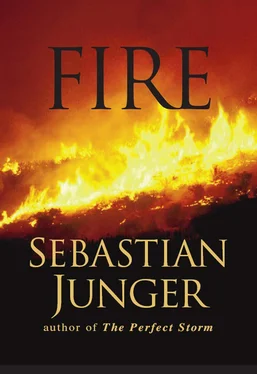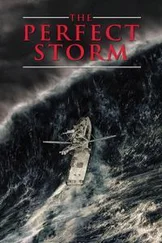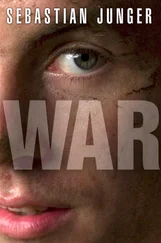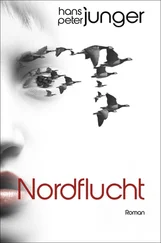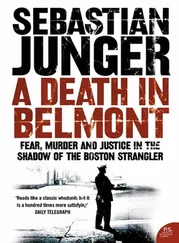The more remote of the two sites near Peja was known as the Well, outside a little village named Studenica. Around midday on April 12, Serb paramilitaries identifying themselves as Arkan’s Tigers executed nine people at a farmhouse and then dumped the bodies down the well. They then smashed the stone and mortar wall surrounding it and dropped the rubble down the hole. Two months later villagers returning to the area dug the well out and pulled up nine badly decomposed bodies. Eight of them were buried at some distance, but one—that of eighty-six-year-old Sali Zeqiraj—was buried in the yard in front of the farm.
I drove up to Studenica early in the morning with the FBI convoy. It was a beautiful spot, smack up against the Koritnik Mountains, with all Kosovo spread out below us. Plumes of smoke rose over the valley from Serb houses that had been set on fire by the KLA. The field had not been de-mined, so the FBI investigators climbed carefully out of their army vehicles and approached the farmhouse along the tire ruts that had been left by previous cars. Roger Nisley, leader of the mission, went ahead to scout the house out and then gathered the investigators in front of the lead Humvee. “It looks like shots were fired through the window,” he said. “So get a sketch of that. And we have a body here, apparently it’s the grandfather, but we have permission to dig up only one body. There is a total of nine.”
While evidence collection people photographed the house and picked through it for shell casings and bullet holes, four diggers started opening up the grave. Family members stood in the field, anxiously stripping grass stems—just far enough away that they didn’t have to see anything they didn’t want to see. Only one of them—a young man named Xhevat Gashi, who lived in Germany and had come back only the day before—stood close by. The body came up swaddled in clear plastic sheeting, tied with rope at both ends. The investigators, dressed in white Tyvex jump suits with face masks that pinched their nostrils closed, untied the rope and carefully unwrapped the body. The dead man was dressed in pants and socks and a plaid shirt; the investigators cut the clothes off him and laid him out on a blue tarp. He’d been in water for two months, and his flesh had a doughy look, as if he were a mannequin made out of bread. It was very hard to make a connection between the body on the tarp and a human being. Out in the field, one of the family members started to cry. Xhevat, the grandson, shifted on his feet and kept watching.
The investigators quickly found something of interest. “We have an entrance gunshot wound in the back of the head,” said Dr. Andrew Baker, one of the pathologists on loan from the Armed Forces Institute of Pathology. “You’ve got a sharp edge on the outside, blunt edge on the inside. I don’t see an exit wound so far.”
The fact that there was no exit wound was important because it meant that the bullet—a crucial piece of evidence—might still be in the skull. Baker made an incision in the back of the scalp and pulled the skin forward until he had peeled the face down like a thick rubber mask. Then he opened the skull and probed inside the cavity. It took fifteen minutes to search the skull and the countless folds of the brain; Baker found neither the bullet nor an exit wound. He pulled the face back up, reassembled the head, and rewrapped the dead man in plastic. Then the four diggers lowered him back into the grave.
One of the advantages to investigating a shooting murder (as opposed to a knifing or a bludgeoning) is that ballistics is a precise science and bullets act in fairly predictable ways. By reconstructing the path of a bullet—through a room or through a body—it is possible to know a lot about where it was fired from. For example, a round from an AK-47 assault rifle leaves the muzzle of the gun at twenty-three hundred feet per second, twice the speed of sound. When it hits a person, the density of the tissue forces the round to yaw to one side until it is traveling sideways or even backward. Shock waves ripple through the tissue and create a cavity that can be as much as eleven times the size of the bullet. The cavity lasts only a few thousandths of a second, but the shock waves that created it can shred organs that the bullet never even touches. In head wounds the temporary cavity is particularly devastating because the skull—being rigid—can respond to the sudden deformation only by bursting. If the gun barrel is actually touching the victim, rapidly expanding gases inside the barrel get trapped in the wound and blow blood and tissue back out. It is safe to assume that some of the killers in Studenica walked away covered in the people they killed.
Even if the bodies are not recovered, though, a very good idea of what went on at the moment of death can be had by something called bloodstain pattern analysis. Drops of blood splash differently depending on the angle at which they strike a hard surface, and arcsine equations can be used to reconstruct the path that the blood took through the air. If there are more than two bloodstains, something like triangulation can be used to figure out—down to an area about the size of a grapefruit—where in space they all originated. “That’s useful in saying, ‘Well, the person was standing up when they were shot,’” says Grant Graham, a criminalist with the Armed Forces Institute of Pathology. “‘The person was on their knees. The person was lying down.’…There are all different types of bloodstain patterns—swipes, wipes, drips, arterial spurts, gushes—and you can reconstruct what happens in the crime scene as things move along…. It’s a moving, flowing event.”
Unfortunately, many of the dead in Kosovo were burned beyond recognition. The report for 157 Millosh Gillic Street states that FBI investigators went to a burned-out residence and found “the skeletal remains of an indeterminate number of victims.” But even a charred pile of bones can contain enough evidence to identify the dead and the method of death.
“The human skeleton is a dynamic part of the body,” says Dr. Bill Rodriguez, the forensic anthropologist attached to the FBI team. “It is constantly altered by activity. In a runner, changes occur in the bones of the leg; in a dockworker, changes occur in the upper torso. Bones are just like fingerprints…their structures are so unique that you can make a positive identification.”
To identify the remains, the investigators need something to compare them with. Determining that you have a dead male in his mid-thirties who probably did a lot of heavy lifting doesn’t do much good unless you also have descriptions of missing people to pick from. X rays provide the most accurate matches, as do dental work and injuries, but absent those kinds of records, forensic anthropologists can still provide a huge amount of information about who was killed and how. There is only one right femur in a body, for example; the number of right femurs in a pile of bones tells you how many people there were. Not only that, but bones differ enough between sexes, races, and age groups that it is often possible to define quite narrowly who these people must have been.
In 1948 an anthropologist working for the army’s Office of the Quartermaster General—using war dead from Guadalcanal, Iwo Jima, and other Pacific battlegrounds—improved upon an already strong statistical connection between body height and femur length. If you multiply the length of the femur by 2.38 and then add 61.41 centimeters, you get the height of a person to within a fraction of a centimeter. Further military studies found that the shafts of the long bones of the body, known as the diaphyses, gradually form solid bonds with the caps of the bones throughout a person’s teens. Different bones solidify at different times, providing a good indication of the dead person’s age. Hundreds of dead American soldiers were identified using medical records and such statistical techniques; the same techniques can be applied to determine whether the dead in Kosovo’s mass graves match accounts given by people who witnessed the killings.
Читать дальше
